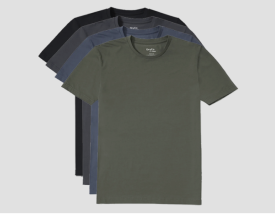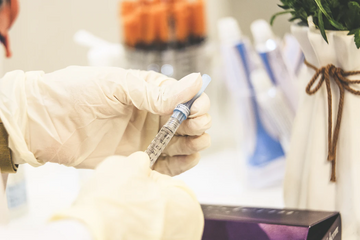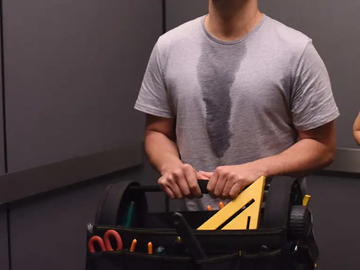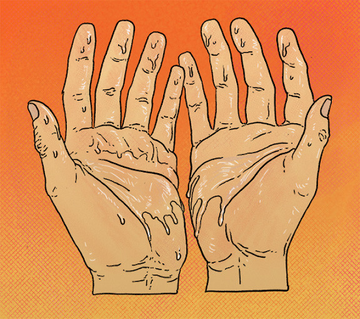Let’s face it - when excessive sweating holds you back from living life to the fullest, you probably dream of finding a treatment that brings fast relief. The speed at which you see results from hyperhidrosis treatment will differ considerably from someone else and it’s crucial for you to have realistic expectations. This post will take a look at the common treatments prescribed to treat excessive sweating, and will offer insights on the average length of time needed to see results from them.
Aluminum-Based Antiperspirant
The first line of treatment for axillary hyperhidrosis prescribed by doctors is prescription-strength antiperspirants. They are not the typical store-bought antiperspirants you would find in the personal care aisle at the grocery store. They’re medicated antiperspirants that plug your sweat glands, which, in effect, hits the brakes on sweat production.
Although doctors prescribe these antiperspirants primarily for excessively sweaty armpits, they are effective for other affected areas such as the feet and hairline. Being a topical solution, hyperhidrosis antiperspirants are the mildest of treatments, but they can still have some side-effects. This includes skin irritation and burning sensation.
How Long Does it Take to See Results? There is no general consensus on how long this takes because there are different prescription strengths (and different response times) to the treatment. Some individuals may see an improvement in a matter of a few weeks, whereas others may not see an improvement until several months later.
Anticholinergic Medications
For more persistent cases of hyperhidrosis, a doctor will likely prescribe medication. These drugs reduce the production of acetylcholine, the neurotransmitter that can trigger excessive sweating.
The four drugs commonly prescribed for the condition are glycopyrrolate, oxybutynin, benztropine, and propantheline.
These medicines can produce side effects, the most common ones being:
- Dry mouth
- Dry eyes
- Blurry vision
- Heart palpitations (abnormal heartbeat)
These side effects are generally mild and usually only occur in high doses.
How Long Does it Take to See Results? Like prescription antiperspirants, the results produced by prescription medications can vary considerably from person to person. With that said, many sufferers who take medications see a reduction in sweating within 2-5 hours after taking a dose. Patients often say that they’re able to stay dry for 8-10 hours or more. Of course, the sweating will return once the medication wears off, meaning that you will have to take it daily for sustained relief.
Botox
Botox, the famous wrinkle-busting shot/anti-aging elixir, is also an effective hyperhidrosis treatment. Dermatologists typically use Botox treatments for auxiliary (underarm) hyperhidrosis, although they sometimes use it for excessive sweating of the hands and feet.
A botox injection (short for Botulinum toxin) temporarily blocks the release of acetylcholine, a neurotransmitter, which scientists believe plays a role in excessive sweating. Botox can have some side effects including muscle weakness (which is more commonly seen when injected into the hands), but they are often mild and short-lasting.
How Long Does it Take to See Results? You can see a noticeable reduction in sweat four to five days after treatment and this lasts for about four to six months. You can then receive another shot when/if the excessive sweating returns.
Iontophoresis
Treating palmar (hand) and plantar (foot) hyperhidrosis is tricky because there aren’t many minimally-invasive treatments for it. However, iontophoresis has become the golden standard in treatment for excessive sweating of the hands and feet, even sparking a DIY movement of people who make their own devices.
Iontophoresis requires you to immerse your hands or feet in a shallow bucket of water. You then hook up the iontophoresis device to the affected region to deliver a low-voltage current through the water to target the sweat glands. Many hyperhidrosis sufferers swear by it and have praised it for its efficacy.
How Long Does it Take to See Results? It usually takes somewhere between 6 to 10 treatments (each lasting 20-40 mins) to shut off the sweat glands. You might need to space the treatments out, perhaps, doing it two or three times per week, meaning you may see results within a two-four week span.
Surgery
When all other treatments fail, the last and best option will be surgery. It goes without saying that surgery is the most-invasive procedure available to hyperhidrosis sufferers, and carries more risks than its less-invasive counterparts. Nevertheless, the surgery is still very safe overall and boasts a success rate.
There are few methods that a surgeon can use depending on the nature of your hyperhidrosis. They include:
- Excision (cut out sweat glands)
- Liposuction (remove with suction)
- Curettage (scrape out)
- Laser surgery (vaporize)
All of these methods will result in the complete removal of sweat glands from the affected region, and removing them is permanent.
Another surgical technique used to treat hyperhidrosis is endoscopic thoracic sympathectomy (ETS). With this procedure, the surgeon uses a tiny camera to locate nerves connected to your sweat glands and then cuts or destroys them. Brain signals will no longer reach the sweat glands in the affected region now, meaning you won’t sweat there anymore.
In both procedures, a patient may experience some bruising and soreness. There is also a risk of scarring, infection, and nerve damage (loss of sensation). Very rarely, some patients develop what’s known as compensatory sweating - a complication that causes sufferers to sweat more than they did before treatment.
How Long Does it Take to See Results? Once the sweat glands are removed, the results are immediate. Once they recover from surgery and experience sweating again, it won’t be the deluge they were used to dealing with before.
Relief from Hyperhidrosis? Time Will Tell
When answering the question of how long does it take to treat hyperhidrosis, it’s important to keep in mind that your body’s natural response to treatment will provide the answer. For some people, it will take a simple combination of lifestyle changes and an antiperspirant to bring them relief in a matter of weeks. For others, it may take months of experimenting with different treatments and combinations to find some relief.
Nevertheless, the treatments mentioned above do have average response times. You should pick the right treatment with the help of your family physician or dermatologist so that you pick a solution that is safe and suitable for your unique case. This will ensure that your choice brings you relief and the lowest amount of risk possible.
In the meantime, consider making lifestyle changes and practical solutions such as sweat-resistant clothing that can help you reduce the discomfort of excessive sweating. It may take some time to find your ideal solution, but when you do, you will feel more in control and regain lost confidence.







